Boston vs. Steinway: A comparison of two sister brands
May 16, 2022 •Stephen Reed
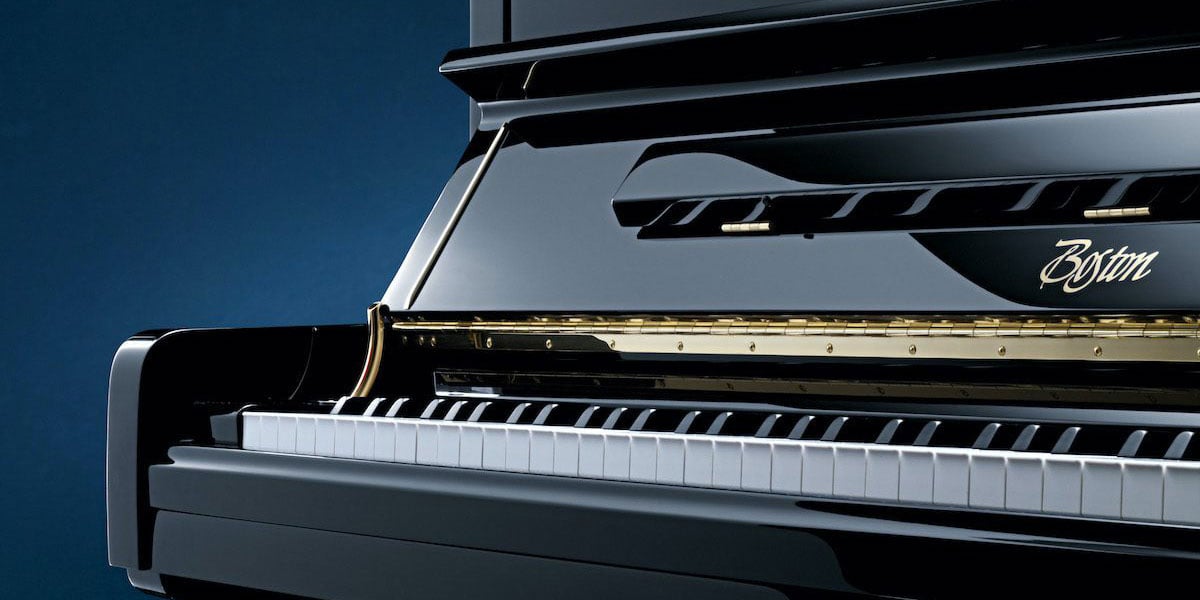
Henry E. Steinway famously said that his company’s vision was to build the best piano possible. As a result, Steinway pianos have been handcrafted for 169 years.
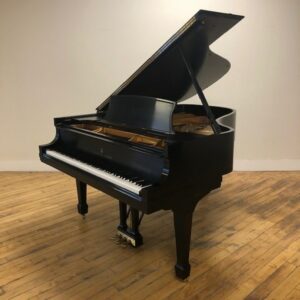
Only the handcrafted process, with its combination of high craftsmanship and special materials, can create the kind of high-quality instrument that Henry Steinway first envisioned. Steinway & Sons pianos have earned their stellar reputation thanks to continued dedication to excellence.
The Steinway-designed Boston line of pianos, created by Steinway in 1992, is the culmination of Steinway & Sons’ decision to develop a new line of instruments that was imbued with much of Steinway’s design into a manufactured piano.
Through its adherence to Steinway design principles, Boston has distinguished itself within its price range. After all, only Boston and the other Steinway brand, Essex, can lay claim to having Steinway’s design and 169 years of piano building experience behind it.
However, significant differences remain between the handcrafted Steinway & Sons and its younger sister brand, the manufactured Boston. Understanding these differences, weighing the importance to you, is important, as you wouldn’t want to go home with a piano that doesn’t meet your expectations.
At M. Steinert & Sons, we’ve been helping piano customers make an informed decision regarding the best piano for their needs since 1860. We have kept current with every new model of Steinway & Sons and Boston pianos and explain the similarities and differences between them on a daily basis.
By the end of this article, you will understand the differences and similarities between these two popular American piano companies. This will enable you to decide which aspects of both piano lines mean the most to you.
Boston: Steinway’s little sister, now coming into her own
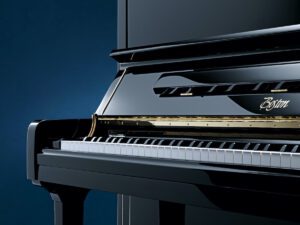 The Boston Piano Company was created in 1991 by Steinway in response to the growing mid-level piano market. Steinway had a clear understanding that many buyers would love to own a handcrafted Steinway but simply couldn’t afford it yet.
The Boston Piano Company was created in 1991 by Steinway in response to the growing mid-level piano market. Steinway had a clear understanding that many buyers would love to own a handcrafted Steinway but simply couldn’t afford it yet.Steinway leadership made a bold move. They decided to enter the world of manufactured pianos, allowing for Boston pianos to be sold at a more affordable price than a handcrafted Steinway & Sons.
They contracted with a well-regarded piano manufacturer with the understanding that as many Steinway-designed features as possible would be included in their production process.
Over the past three decades, we at M. Steinert & Sons have studied the new Boston models as they have been released. Obviously, we believe in all of our Steinway-designed pianos, including Bostons. However, we still strive for objectivity when describing them to you.
Having said that, it is simply a fact that Bostons have grown so popular with their Steinway-design elements and lower price that today many customers prefer a new Boston to a used Steinway. But the discerning buyer still wants to know about the particular differences between these two sister pianos, as well as their similarities.
In the end, people want to know: Can a manufactured piano, built with Steinway design, rival the venerable handcrafted Steinway & Sons? Just how far has modern piano engineering come?
Boston vs. Steinway pianos: The similarities
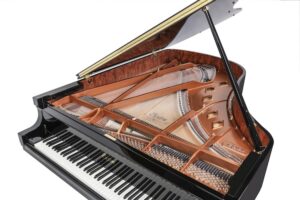
Obviously, the challenge for Steinway engineers Susan Kenagy and John Patton when designing the Boston was to discern which elements of the Steinway design could be transferred to a manufacturing process.
Here are some of the key Steinway design elements placed into Bostons:
- Low-tension scaling resulted in a longer sustaining tone than other leading manufactured pianos.
- A patented, large, Sitka Spruce soundboard that provides a fuller tone;
- Solid copper-wound bass strings, ensuring pure tone for the life of the instrument;
- More sustain, dynamic range, and warmer tones;
- Wide-tail design for a bigger sound;
- Hard Rock Maple inner rim, producing less vibration and less absorption of sound.
In addition, one of the most important Steinway-design aspects infused into every Boston is the famed “Steinway sound.” This has often been described as an even, well-rounded tone.
The presence of the Steinway sound in Boston pianos is a pleasant surprise to many. While concert pianists likely can hear a broader range of color offered by a Steinway & Sons grand piano, for Boston buyers the Steinway sound is still there. No other manufactured piano comes so close to the Steinway touch and tone.
In short, Boston’s warm, even tone confirms it as a fully-credentialed member of the Steinway family of pianos.
Boston vs. Steinway pianos: The differences
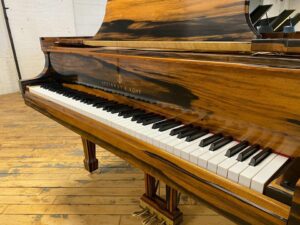
The most obvious difference between a Boston piano and a Steinway & Sons piano is the way they are made. Having many skilled Steinway craftspeople working on every design nuance naturally creates the following differences between Steinways and Boston:
- Steinway & Sons pianos are handcrafted in a year-long process in Astoria, New York and Hamburg, Germany. Bostons are manufactured in a Kawai factory in Japan;
- Materials selection in Steinway & Sons pianos is so rigorous that more than 50% of the excellent woods purchased by Steinway still don’t qualify for inclusion in a Steinway & Sons piano. Both Steinway and Boston have Hard Rock Maple inner rims, but Steinway is more particular about some other woods;
- Boston uprights have a muffler pedal, not a Sostenudo pedal as Steinway & Sons pianos do;
- Different hammers in the action between the two brands. Hammers pressed in a manufacturing process like Boston’s may make them consistent. However, this kind of hammer cannot provide the range of tone colors possible only in the slower hand-pressed approach found only in the longer, handcrafted process used by Steinway;
- Boston generally has a tapered, Sitka Spruce soundboard. Steinway & Sons features the patented Diaphragmatic Soundboard, which is unique to Steinway & Sons.
The best way to choose between these two brands is to play them
Ultimately, when it comes to a choice between two or more piano brands, the choice comes down to each individual's needs and priorities. People who can afford a Steinway & Sons piano typically select one of their models.
However, the Boston is a very popular model for those who want many of the same features as a Steinway at a lower price, and want the option to trade up to a Steinway & Sons piano at some point in the future.
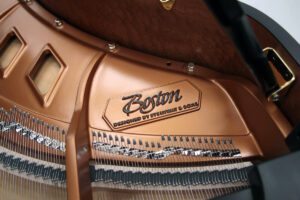
Steinway & Sons moved in a bold and unprecedented way when they decided to create a mid-level, production piano that still had as much of the Steinway design as the manufacturing process permitted.
Sharing much of Steinway’s design recipe, 16 decades in the making, in order to make a less expensive yet high-quality piano, was a bet that has paid off for Steinway & Sons. Each year, thousands of satisfied Boston customers come away from Steinway dealers, choosing a new Boston over their other options.
Come into M. Steinert's showroom in Newton to sample some Steinways and Bostons for yourself. Trying out such models will certainly inform your thinking as you determine your own priorities.
If you have an interest in a Boston piano, click on this article for more information:
Boston Pianos Review: How good are Boston pianos?
And if you are interested in learning more about the Steinway sound, read this article:
What is special about the Steinway sound?
Featured Articles
Categories
- Beginner Pianos (17)
- Boston Pianos (12)
- Comparisons (26)
- Designer and Specialty Pianos (8)
- Essex Pianos (10)
- Events (11)
- Featured (22)
- Institutional (3)
- Joy of Piano (14)
- Learning About Pianos (62)
- News (34)
- Pricing and Cost (19)
- Resource Center (117)
- Roland Pianos (6)
- Spirio (14)
- Steinway Pianos (67)
- Student (14)
- Teacher (12)
- Used Pianos (20)
- Videos (17)

